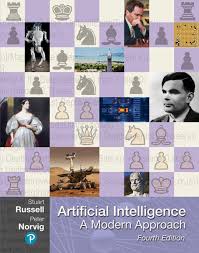White Paper: Artificial Intelligence: A Modern Approach
Introduction
Artificial Intelligence (AI) has witnessed remarkable advancements in recent years, revolutionizing various industries and transforming the way we live and work. Artificial Intelligence: A Modern Approach, authored by Stuart J. Russell and Peter Norvig, is a seminal textbook that provides a comprehensive introduction to the field. This white paper explores the key concepts, techniques, and applications presented in the book.
Key Concepts
-
Intelligent Agents: The book introduces the concept of intelligent agents, which are entities that can perceive their environment and take actions to achieve their goals.
-
Problem-Solving: AI agents must be able to solve problems by searching for solutions, planning, and reasoning.
-
Knowledge Representation: The book discusses various methods for representing knowledge, including semantic networks, frames, and ontologies.
-
Machine Learning: Machine learning algorithms enable AI agents to learn from data and improve their performance over time.
-
Natural Language Processing: NLP techniques allow AI agents to understand and generate human language.
-
Robotics: AI is applied in robotics to create autonomous systems capable of interacting with the physical world.
Techniques and Algorithms
-
Search Algorithms: The book covers various search algorithms, such as depth-first search, breadth-first search, and A* search, for problem-solving.
-
Game-Playing Algorithms: Techniques like minimax and alpha-beta pruning are discussed for game-playing AI.
-
Machine Learning Algorithms: The book explores a wide range of machine learning algorithms, including supervised learning, unsupervised learning, and reinforcement learning.
-
Neural Networks: Deep learning architectures, such as deep neural networks and recurrent neural networks, are introduced for complex tasks.
Applications of AI
-
Natural Language Processing: AI is used in applications like machine translation, text summarization, and sentiment analysis.
-
Computer Vision: AI enables computers to understand and interpret visual information, leading to applications in image recognition, object detection, and autonomous vehicles.
-
Robotics: AI is essential for developing autonomous robots capable of performing tasks in various environments.
-
Expert Systems: AI-powered expert systems can provide expert advice and decision support in domains like medicine and finance.
Conclusion
Artificial Intelligence: A Modern Approach offers a valuable resource for understanding the fundamentals of AI. By exploring key concepts, techniques, and applications, the book provides a solid foundation for those interested in pursuing AI research or developing AI-powered systems.
References
-
Russell, Stuart J., and Peter Norvig. Artificial Intelligence: A Modern Approach. Prentice Hall, 2021.
-
Goodfellow, Ian, Yoshua Bengio, and Aaron Courville. Deep Learning. MIT Press, 2016.
-
Mitchell, Tom M. Machine Learning. McGraw-Hill, 1997.
-
Nilsson, Nils J. Artificial Intelligence: A New Synthesis. Morgan Kaufmann, 1998.
Additional Tips:
-
Cite specific sections or pages where you've referenced information from the sources.
-
Use a consistent citation style (e.g., APA, MLA, Chicago) throughout your paper.
-
Verify the credibility of your sources to ensure their accuracy and relevance.
-
Consider adding more recent publications if available to reflect current trends and advancements in AI.



